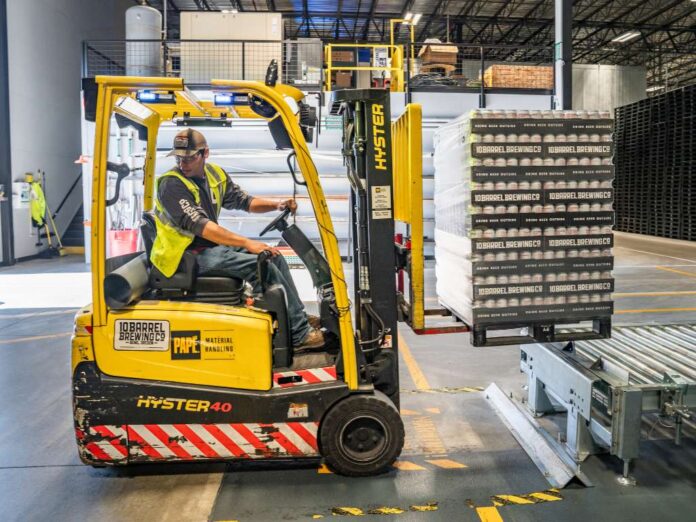The freight transportation industry has long been dependent on traditional methods for matching shippers and carriers: phone calls, brokers, faxes and manual exchanges were the norm. With digital technology’s rise comes an important transformation: digital freight and dubai side loader provider matching platforms have emerged as essential tools for optimizing logistics operations while simultaneously reducing costs and improving transparency; often supported by cloud technologies or intelligent algorithms, they are revolutionizing how transport operations take place.
Origins of freight platforms: humble beginnings
Digitizing freight has its origins in the 1990s with the rise of online databases allowing carriers to view load offers online. While these early attempts at digitizing were limited in scope, often limited to forums or bulletin boards for user interaction and providing quality information sharing platforms, their effectiveness laid a basis for modern methods of linking supply and demand in transportation sectors, despite these initial limitations.
Rise of Collaborative Platforms
With the rise of Web 2.0 and mobile technologies, freight matching platforms have experienced dramatic changes. Companies such as Uber Freight, Convoy, Sennder and Fretlink have developed intuitive user interfaces, mobile apps and real-time geolocation systems to facilitate freight matching services. Shippers can post their transport needs while carriers view available offers, submit quotes and track journeys easily – creating a collaborative model which promotes fast, transparent matching for greater transaction times and cost efficiency.
How digital freight platforms operate
Basic principles behind platforms for transport offers and freight requests are straightforward: algorithms match them between transport offers and freight requests centralized on one platform; users create profiles, specify capabilities or needs and communicate through dynamic dashboards – some platforms also integrate advanced features like dynamic pricing, document management, automated invoicing and GPS tracking, while some go even further by offering insurance, customs clearance or dispute management services – to form a complete ecosystem where each player in the supply chain has their place.
Benefits for senders
Shippers have a wider view into capacity, carrier choices, and cost containment through digital platforms, as well as real-time visibility allowing shippers to compare offers, negotiate prices, and view real-time tracking of their shipments. They also facilitate document management with integrated tools for delivery notes, invoices and certificates – improving planning efforts while decreasing error risk and increasing customer satisfaction.
Benefits for carriers
Benefits for sea freight, Carriers and Carriers benefit from increased access to demand, reduced empty runs and simplified administrative processes through these platforms. Filling their trucks more efficiently while optimizing routes and secure payments – plus they have analytical tools available to track performance, identify opportunities and improve profitability – offers tremendous opportunity for growth and professionalization – especially among smaller carriers who may otherwise feel excluded by larger networks.
Artificial Intelligence at your service
The incorporation of artificial intelligence (AI) into freight platforms signifies a transformative moment in their development. Machine learning algorithms can forecast demand, identify delivery times and analyze traffic and weather patterns to optimize routes and schedules; identify exceptions, present alternative mode shipments, and improve quoting precision, while smart process automation improves outcomes by reducing human error, speeding process, and providing service reliability.
Blockchain can offer traceability.
Blockchain is another promising technology in digital freight – it secures transactions, maintains data integrity and facilitates traceability of goods. Each transaction is recorded in an immutable ledger that all authorized parties can access – this reduces fraud risks while simplifying audits and building trust between partners. Some platforms have begun using Blockchain for contract management, payments and certificates of origin certification purposes.
Adoption can present challenges and face resistance.
Digital freight platforms may present many advantages, yet they still encounter resistance. Traditional players fear losing control, technological dependency and margin pressure; others raise questions regarding data security, system compatibility or team training – adoption can vary depending on region, sector and company size; to overcome such hurdles requires increasing awareness, offering tailored solutions and offering personalized support services.
Impact on Environment and Sustainability
Digital freight platforms can also help reduce the carbon footprint of transportation by optimizing routes, minimizing empty runs, and encouraging freight consolidation – thereby optimizing resources more efficiently. Some platforms even feature environmental indicators or green transport options as carbon offsetting tools, meeting customer expectations while strengthening companies’ images simultaneously.
Intelligent logistics strategies.
Digital freight platforms have emerged as part of an overall trend toward integrated and intelligent logistics. No longer just connecting people, these tools now serve as control centers capable of orchestrating all logistics operations – thanks to IoT devices, AI, and connectivity technologies, they provide real-time insight into supply chains while making logistics operations more agile, responsive, and resilient to market fluctuations.
Case and testimonial studies should be included.
Many businesses are seeing tangible advantages from digital freight platforms. A food distributor may reduce transportation costs by 15% by optimizing routes; an industrial manufacturer could shorten delivery times through improved flow coordination; an independent carrier could expand to new markets while protecting its revenue stream – all these examples highlight the power of these tools to revolutionize logistics regardless of sector or company size.
Future of freight platforms
Digital freight matching platforms look promising for the future. Their evolution will continue towards increased automation, Intelligence and interoperability; with boundaries between modes of transport (road, rail, sea and air) tending to blur in favor of an integrated multimodal approach. Platforms will become digital logistics hubs capable of managing complex flows while meeting regulatory requirements and adapting to market developments; their role will become integral in developing logistics of tomorrow that are more efficient, sustainable and connected.

